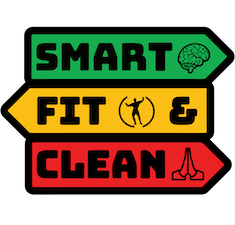This blog series is not so much a series of lessons about the history of CrossFit, but more like a history of the lessons I learned from doing CrossFit. (Read pt.1 here and pt. 2 here). To be absolutely fair, I have to credit Greg Glassman’s ideas about fitness with inspiring me and exciting me very much when I was 21 years old. I got totally into it. And it helped me a lot. And I learned a lot of good things. However, there were some ideas in CrossFit that just turned out to be totally wrong. I hope to give an honest account of what turned out to be true and what turned out to be false, in my experience.

Sickness, Wellness, and Fitness
If you look at that picture above, you will see that Greg has described a spectrum, wherein “sickness” is at one end, while “Wellness” is in the middle, and “Fitness” is at the far end. The argument made in this model is that “Fitness” is in other words a position of “super-wellness”. He’s assuming that “sick” people have poor measurements of blood pressure, body fat, bone density, triglycerides, good and bad cholesterol, flexibility, muscle mass, and other characteristics. The “well” people will have decent markers of health. Then, he goes on to claim that “fit” people will have even better markers of health.
It’s an attractive argument, and I bought into it hook, line, and sinker for over a decade, but the problem is it isn’t true. The truth is, sickness and health are positions on a continuum, but when you add in the aggressive pursuit of fitness and athleticism, that circle comes all the way back around towards sickness again.
I think I need to pause and clarify something here. I agree with Greg’s statement that, “Fitness is and should be ‘super-wellness’.” I would love for everyone’s pursuit of fitness to bring them towards greater health. I also agreed with his next statement that, “A fitness regimen that doesn’t support health is not CrossFit.” The only problem with that one is that CrossFit very quickly departed from fitness regimens that supported health. So that made me an “anti-CrossFit CrossFitter”. In other words, myself and a lot of my fellow early CrossFit folks had to re-conceptualize our approach as being opposed to CrossFit HQ in order to stay in line with the original ideas of CrossFit. That’s what happened after the 2008 Black Box Summit.
We saw CrossFit HQ aggressively promote the competitive version of CrossFit as a sport filled with elite athletes. Well, as everyone ought to know by now, elite athletes are not actually healthy. Former professional athletes in any sport have shorter lifespans than average folks. Old injuries and repeated damage to their bodies’ fundamental systems lead elite athletes into a miserable aging process. If you actually look at the bloodwork of elite athletes, it doesn’t look anything like “super-wellness”, it actually looks like sickness and death.
So, that’s the first place where CrossFit broke their own sickness, wellness, fitness model. They idealized the fitness athletes whose fitness regimen did not support health. Then they went on to continue breaking their own rules through the cultish churn of under-qualified trainers and sub-par affiliate boxes.
Did you know that for a while CrossFit was referred to as a cult? This was because the massive wave of new CrossFit practitioners that entered after the Reebok sponsorship deal of 2010 were following CrossFit HQ with a, “misplaced or excessive admiration” (one of the definitions of a cult). They clung so hard to some of the misguided or incorrect assumptions of CrossFit that I’ve discussed in the previous two articles, that they didn’t even notice they were making themselves injured and sick from this practice.
The inconsistencies in the CrossFit methodology meant that following certain parts of it (the “random” and “infinitely varied” parts, for example) led to breaking other parts of it (the “doesn’t support health is not CrossFit” part). So, we had CrossFit affiliate gyms around the world doing stupid things in the name of CrossFit that led to injury, illness, and endocrine malfunction. These were inexperienced trainers who paid $1000 to attend a 2-day course and were suddenly considered qualified to own a CrossFit gym and run people through complex and difficult programs of Olympic Weightlifting and High Intensity Interval Training. It’s a little bit like giving a soldier 2 days of boot camp, then handing him a gun and putting him on the front lines. People got hurt.
So, what’s the lesson in all this? A good fitness program absolutely DOES need to support health. And CrossFit isn’t it. Be honest about that. If you want to do CrossFit, and especially if you want to be a competitive fitness athlete, recognize that your pursuit will probably lead to poorer markers of health. But, if the trade-offs in terms of entertainment, excitement, accolades, or income are important enough to you, then that’s a deal you’re willing to make. There’s nothing wrong with that. Just be honest about it. Health and wellness is a desirable state that is better than sickness, but the pursuit of competitive fitness that CrossFit promotes actually leads back around to sickness again.
More tomorrow…

4 thoughts on “CrossFit History Lessons, Pt. 3”